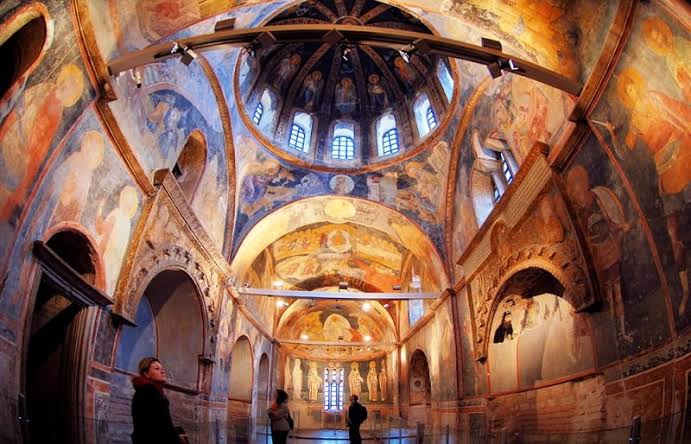A monastery inside the city walls: Chora Church
Every piece of land we step on to in Istanbul, every road we walk through and every structure we look at are the monuments of experiences. This beautiful city we live in is the world's open-air museum.
The region known as 'the Historical Peninsula' in Istanbul became a peninsula completely surrounded by city walls in the Byzantine time. Thus, this region was also called 'Surici (means 'within city walls'). The Surici region both houses lots of monuments of the world's heritage and also a structure that remained just near the city walls and functions as a museum today. This unique structure is the Chora Church and Museum.
A MONASTERY STANDING IN THE COUNTRYSIDE
Chora Church and Museum, highly frequented by tourists in Istanbul, is a part of a complex monastery devoted to Jesus Christ in the time of the Byzantine Empire. The structure built outside the walls of Constantinople was consequently named 'Chora,' referring to its location in the countryside outside of the walls.
The Empire Iustinianus had the Chora Church, the construction date of which is not exactly known, rebuilt in 536 instead of a ruined chapel. The Chora Church, suffering from damages and collapses due to the Latin invasion in the 13th century and a big earthquake, was restored by Theodoros Metokhites, who was a member of an aristocratic family in the time of the Emperor Andronikos II. He had also the biggest and richest library of the empire built inside the church. Many leading to the creation of a new art movement. The Chora Monastery, standing inside the walls, had never lost its importance as a holy place during the Byzantine period.
CHORA MOSQUE AFTER THE CONQUEST
After the conquest of Istanbul, the Chora Monastery continued functioning as a monastery and church without any modifications. In the time of Beyazid II, this complex into a mosque by Sadrazam Hadim (Atik) Ali Pasa in 1511, but a monastery was also built inside. The section of a monastery in the Chora Mosque did not survive, but the section of the church still stands today.
THE MUSEUM RECEIVING MOST ATTENTION AFTER THE HAGIA SOPHIA
In the Republican period, the historical structure converted into a museum by cabinet decree is a museum receiving the most attention after the Hagia Sophia. Having undergone a new restoration recently, Kariya Museum has been opened to its visitors again.
Kariya Museum, located in the Edirnekapi neighborhood of Istanbul's Fatih district, is open to visitors every day.
